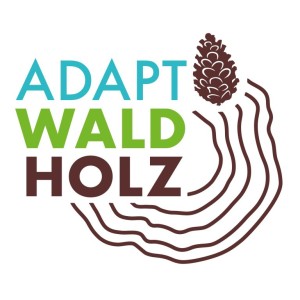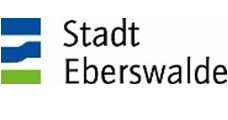ADAPT - Regulus
ADAPT-Forest-Timber - ADAPTive Forest-Resource-Management for a sustainable timber-economy in the Brandenburg-Berlin region
Subproject 3: Concepts for future Timber-applications, in terms of regional Resource-Provision

Project decription
The planned conversion from pure stocks of pinewood, which make up 70 % of Brandenburg forests at the moment, towards a more damage resistant mixed forest, will result in a continuously high emergence of pine-timber in the upcoming 20 – 30 years. Currently, about 75% of the wood used annually in Brandenburg and Berlin goes to the local wood-based materials industry. However, for a sustainable use of wood, and the associated long-term sequestration of the carbon contained in the material, it is of great importance to further expand regional value chains, especially of solid wood in timber construction.
The aim of the project is the conception and development of an adaptive and integrative forest-wood management system in Brandenburg-Berlin, using the example of pine. Through the establishment of a forest real laboratory, the influence of different variants of forest management on the central ecosystem services (wood production; carbon sequestration; ground and drinking water supply) will be investigated. On the utilization side, the regional added value of pinewood in timber construction is to be strengthened through the development of new utilization approaches and the further development of standards for structural timber engineering.
Within the framework of the subproject "Concepts for Future Timber-Applications, in terms of Regional Resource-Provision", trees taken from the forest real laboratory are to be investigated at the HNEE in cooperation with the Max Planck Institute of Colloids and Interfaces, with regard to their material properties as well as their knots, fiber courses, densities, annual ring widths, early, late and compression wood fractions as well as cellulose fibril angles, which play a central role for the mechanics, but also for the swelling and shrinkage behavior. In the future, the thus developed model should make it possible to predict the expected material properties of harvested round wood in order to enable a targeted and application-related supply of required wood qualities directly from the forest.
Research project partners
Eberswalde University for Sustainable Development, Faculty of Forest and Environment (HNEE)
Sub-project 1: Potentials and limits of an adaptive forest management in Brandenburg, taking into account the ecosystem services required in the future
Sub-project 2: Timber harvesting, timber logistics and data exchange concepts for the timber supply chain
Johann Heinrich von Thünen-Institute, Institute for Forest-Ecosystems (TI-WO)
Subproject 1: Potentials and limits of an adaptive forest management in Brandenburg, considering the ecosystem services required in the future
Landesbetrieb Forst Brandenburg, Landeskompetenzzentrum Forst Eberswalde (german) (LFE)
Subproject 1: Potentials and limits of an adaptive forest management in Brandenburg, considering the ecosystem services required in the future
Leibniz Center for Agricultural Landscape Research, Research platform data analysis and simulation (ZALF)
Sub-project 2: Timber harvesting, timber logistics and data exchange concepts for the timber supply chain
Max-Planck-Society, Institute of Colloids and Interfaces (MPIKG)
Subproject 3: Concepts for future Timber-applications, in terms of regional Resource-Provision
Funding
The project is a joint project funded from the guideline for funding on the topic of "Regional innovation groups for a climate-protecting forestry and timber industry (REGULUS)" within the framework of the Strategy for Research for Sustainability (FONA) of the Federal Ministry of Education and Research (BMBF) by the Project Management Organisation Jülich (PtJ).
Funding code: 033L301A
Duration: 01.02.2023 - 31.01.2026


 .
.
Network coodination
Scientific project coordination: Dr. Ferréol Berendt (Ferreol.Berendt@hnee.de)
General project management: Prof. Dr. Tobias Cremer
Young Researchers Group: Tobias Bender, Ramazan Bülbül, Maximilian Jakob, Alexa Michel, Dr. Julia Kaplick
Sub-project management: Prof. Dr. Jan-Peter Mund (HNEE), Prof. Dr. Alexander Pfriem (HNEE), Prof. Dr. Ulrich Schwarz (HNEE), Prof. Dr. Peter Spathelf (HNEE), Prof. Dr.-Ing. Karola Dierichs (MPIKG), Dr. Tanja Sanders (Thünen-Institut), Dr. Ulrike Hagemann (LFE), Prof. Dr. Jens Schröder (LFE), Prof. Dr. Gunnar Lischeid (ZALF)
Project duration and volume: 02/2023 - 01/2028; 2.56 Mio. € (HNEE-share: 1.13 Mio. €)
Head of project and contact person (Sub-project HNEE, Chemistry and Physics of Wood)
Prof. Dr.-Ing. Alexander Pfriem (Alexander.Pfriem@hnee.de)
Tobias Bender M.Sc. (Tobias.Bender@hnee.de)
Publications
Bender, Tobias; Sanders, Tanja; Schröder, Jens; Berendt, Ferréol; Pfriem, Alexander (2023). On the Mechanic Behaviour of Scots Pine and how it is affected by specific climatic events. 19th Annual Meeting of the Northern European Network for Wood Science and Engineering (WSE), 10-12 October 2023, Ås, Norway (ed.: E. Larnøy), pp: 81-83















